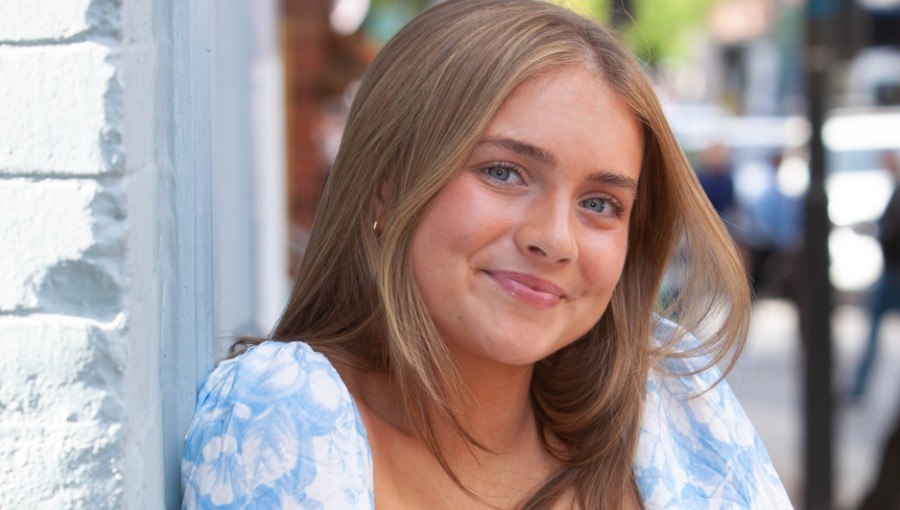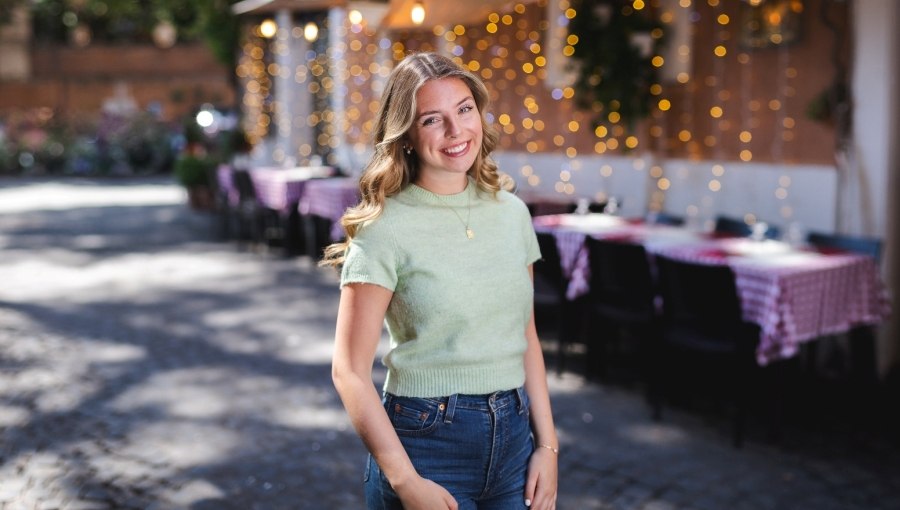Art History MA Students Reflect on their Teaching and Museum Internships
A crowning element of John Cabot University’s Master of Arts (MA) in Art History is the “Professional Experience,” or internship, which MA students complete in their second year. Specialized professors of Art History, in collaboration with JCU Career Services, guide each student in locating an internship best suited to the student’s individual interests and professional objectives.
The opportunities are rich and varied. They include teaching and research internships at John Cabot University and a wide variety of internships at important museums, research institutes, historic libraries, foundations, galleries, and studios in Rome and in other parts of Italy. MA Candidates – the official title for those who have completed the first-year requirements and embarked on their theses – can choose to do one internship, as required for the degree, or two different professional experiences (for example, one in teaching, another in a museum) if they elect to complete their theses over the course of a full academic year.

Bernat Racz
I worked as a teaching assistant for Professor Sharon Salvadori’s Medieval Rome and its Monuments undergraduate course. I knew that I was going to enjoy this experience, but I did not think that it would completely change the way I see education and research. It was a unique experience because Professor Salvadori, like the other professors in the program, is an incredibly talented lecturer. I loved preparing classes and discussing how to cover a certain “style” or century. I also delivered two lectures and shared my insights and challenges regarding readings and topics. It was a strange experience since I was speaking from the perspective of a fellow student and an instructor.

Madeline Sterns
I worked as teaching assistant for Professor Inge Hansen’s Introduction to Art-Historical Thinking course and interned at the Museo delle Civiltà (Museum of Civilizations). I gained invaluable one-on-one guidance from Professor Hansen on how to design a course syllabus. Her perspective on courses as roadmaps with skills and content goals in mind for students helped me solidify my ideas about long-term meaning in education. While at the Museo delle Civiltà, I assisted in the website remodeling process and marketing research. Occasionally, I worked in the bioarcheology lab with the museum’s in-house researchers on Bronze Age human remains. These working relationships and practical perspectives on art-historical museum work opened my eyes to career opportunities outside of academia.

Lindsay Maldari
I interned with the Istituto Amedeo Modigliani (IAM), a non-profit organization whose goal is to disseminate knowledge of and appreciation for the twentieth-century Italian artist Amedeo Modigliani. As an International Exhibition Intern, my duties primarily centered around scouting museums and cultural institutions across Europe to stage an experiential exhibition of Modigliani’s portraits. Having the opportunity to work in an Italian-language environment while also conducting English-language outreach with other European institutions enabled me to develop my confidence and capabilities in Italian while also augmenting my skillset in exhibition communications with a wide variety of museums and galleries.

Chase Palliser
My internship was at the Drugstore Museum, where I worked with archaeological findings from an ancient Roman site. The museum is unusual: an ancient Rome necropolis and contemporary art space in the basement of a modern building where there was once a twenty-four-hour drugstore. As an intern, I was responsible for cleaning, preserving, and measuring ceramic finds and documenting and recording ceramic data from excavations along the via Portuense. I also planned events at the museum for an elementary school in Rome and for my colleagues at John Cabot University. I learned a great deal about museum education, including how to conduct tours for young school groups and universities. Throughout the internship, I worked closely with JCU Professor Cornelia Lauf, who was very inspiring. Although she specializes in contemporary art, Professor Lauf has many connections in art and archaeology that I have benefited from.

Lea Ramaswamy
I completed an internship at Rome’s Museo delle Civiltà (Museum of Civilizations). It was one of the most surprising and exciting experiences I have had in the city. Located in the EUR neighborhood and built for the 1942 Universal Exposition of Rome under the fascist regime, the museum is a highly contested and problematic space. Its collections are derived from multiple Italian ethnographic and colonial collections that have not been contextualized until recently, with the museum’s new director, Andrea Villiani. During an incredibly tense moment in Italian politics, working at the museum was an eye-opening window into the dense network of bureaucracy inherent to a national institution of its variety.
Learn more about the Master of Arts (MA) in Art History.





